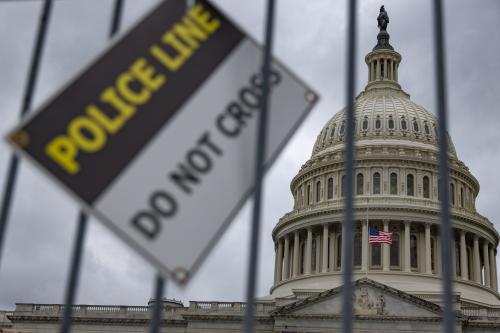Finally, the investigation was over. The riddle solved. On August 18, 2008—after almost seven years, nearly 10,000 interviews, and millions of dollars spent developing a whole new form of microbial forensics—some of the FBI’s top brass filed into a dimly lit, flag-lined room in the bureau’s Washington, D.C., headquarters. They were there to lay out the evidence proving who was responsible for the anthrax attacks that had terrified the nation in the fall of 2001.
It had been the most expensive, and arguably the toughest, case in FBI history, the assembled reporters were told. But the facts showed that Army biodefense researcher Bruce Ivins was the person responsible for killing five people and sickening 17 others in those frightening weeks after 9/11. It was Ivins, they were now certain, who had mailed the anthrax-filled letters that exposed as many as 30,000 people to the lethal spores.
The FBI unraveled the mystery, officials said, thanks in part to the microbiologists seated at a U-shaped table in the front of the room. Among them was Paul Keim, who first identified the anthrax strain used in the attacks, and genetic specialist Claire Fraser-Liggett, who led the team that sequenced the DNA of the anthrax in the letters, tracing the spores back to their genetic match: a flask of superconcentrated, ultrapure anthrax held by Ivins. Several of the researchers at the table had previously counted Ivins as a peer and even a friend. Now they were helping brand him a monster.
Between the officials and the scientists, it was a convincing display. It had to be. Ivins had killed himself three weeks earlier. There would be no arrest, no trial, no sentencing. Absent a courtroom and a verdict to provide a sense of finality or some measure of catharsis, all the FBI could do was present its findings and declare the case closed.
No one involved that day expressed any doubt about Ivins’ guilt. But things are not always as clear-cut as they may seem in an FBI presentation. Two years later, sitting in her office overlooking West Baltimore, Fraser-Liggett concedes she has reservations. “There are still some holes,” she says, staring out her window in discomfort. Nearly 2,000 miles away in Flagstaff, Arizona, Keim has his own concerns. “I don’t know if Ivins sent the letters,” he says with a hint of both irritation and sadness. Even agent Edward Montooth, who ran the FBI’s hunt for the anthrax killer, says that—while he’s still convinced Ivins was the mailer—he’s unsure of many things, from Ivins’ motivation to when he brewed up the lethal spores. “We still have a difficult time nailing down the time frame,” he says. “We don’t know when he made or dried the spores.” In other words, it’s been 10 years since the deadliest biological terror attack in US history launched a manhunt that ruined one scientist’s reputation and saw a second driven to suicide, yet nagging problems remain. Problems that add up to an unsettling reality: Despite the FBI’s assurances, it’s not at all certain that the government could have ever convicted Ivins of a crime.
It took weeks for anyone to realize the attacks were even happening. When Robert Stevens, a photo editor at the Sun tabloid, came down with chills while on vacation in North Carolina on September 29, 2001, neither he nor his wife figured it was a big deal. She went to spend the afternoon with their daughter; he rested on the couch. As Stevens lay there, thousands of spores were filling his lungs. Nestled in the respiratory sacs, the particles slowly came in contact with white blood cells called macrophages, which carried the bacteria into the lymph nodes in the central cavity of his chest. There, the spores began to germinate, shedding their tough outer layer and multiplying relentlessly. The bacteria unleashed two types of toxins into Stevens’ bloodstream. One caused a fluid buildup in his central chest cavity, which squeezed his heart and shoved his lungs against his ribs, making it difficult to breathe. The other began killing off Stevens’ macrophages, decimating his body’s natural defenses.
Two days later, Stevens was feverish, short of breath, and red in the face. He and his wife started driving back to their home in Florida, with Stevens sweating in his seat. When they got there, Stevens’ wife took him, nearly incoherent now, to the hospital. On October 4, he tested positive for anthrax. He died the next day.
Both medical and public officials figured it was a freak but natural occurrence, maybe something Stevens picked up on a hike in the Carolina woods. Because anthrax was known as a potential biological warfare agent, the case grabbed national attention, but there seemed no reason to panic. “It looks like it’s a very isolated incident,” President George W. Bush told the country on October 9.
Three days later, an anthrax-loaded letter was found at NBC News headquarters. A week after that, the FBI recovered an identical-looking spore-laden letter from the offices of the New York Post. “09-11-01,” the letters read. “this is next / take penacilin now / death to america / death to israel / allah is great.“
By mid-October, four more people had been diagnosed with anthrax, and Leroy Richmond, a postal worker at the Brentwood Road mail facility in Washington, D.C., was doing his best to convince his coworkers to relax. Mail handlers had little to fear as long as they took precautions, according to talking points distributed by the government, which Richmond read aloud to several fellow mail room employees. Bacillus anthracis will appear as a white powder that you should keep away from your face. So be careful, but keep doing your jobs, Richmond told his coworkers as he wiped away a sniffle. Everything is going to be just fine.
A few days later, Richmond barely had the lung capacity to walk across the floor of the mail room, which routes correspondence to the U.S. Senate and dozens of federal agencies. His shoulders and chest ached like they had been hit with a bat. “Oh my God,” he thought. “This might be the last breath that I can take.” On October 20, doctors at Inova Fairfax Hospital confirmed that he had been infected with anthrax.
Richmond survived. His coworkers Thomas Morris and Joseph Curseen did not.
The letter that likely infected them was discovered in the offices of Tom Daschle, the Senate majority leader. The envelope had a Trenton, New Jersey, postmark and a return address that read in handwritten block letters, “4th grade greendale school.” An FBI team wearing protective suits placed the letter and envelope in ziplock bags. They then drove the package 50 miles northwest, to Fort Detrick, home of the military’s leading biodefense facility, the United States Army Medical Research Institute of Infectious Diseases—the famed USAMRIID.
John Ezzell, the bearded, Harley-driving head of the institute’s Special Pathogens Sample Testing Lab, was waiting to meet the agents. He spent a day studying the package, then sent it to the lab of Bruce Ivins, one of the institute’s most experienced anthrax researchers. As his fellow microbiologists watched from the hallway, Ivins shoved his double-gloved hands inside a biosafety cabinet containing the sample. He opened the bag and held it up with one hand. When he moved his free hand closer to it, the granules in the bag began moving toward his glove, drawn by a slight electrostatic charge. The microbiologists gasped; they were used to working with wet spores, which fell to the ground easily. But this anthrax was dry and ionized—it would stay aloft and spread like a gas. It was potentially lethal to anyone in the vicinity. “It’s unbelievable,” a colleague remembers Ivins saying. “I’ve never seen anything like that.”
Read the full article at wired.com »



Commentary
Anthrax Redux: Did the Feds Nab the Wrong Guy?
March 24, 2011